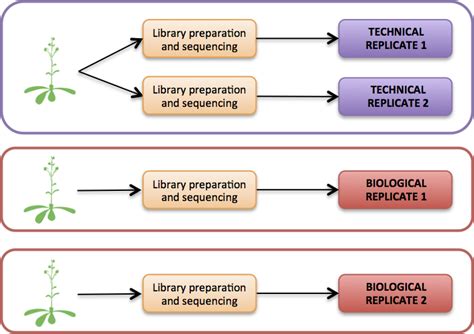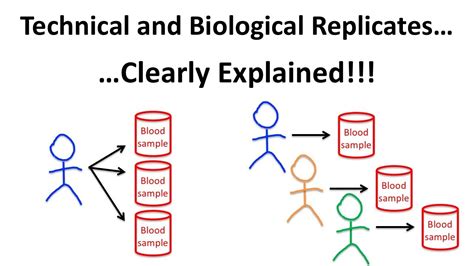what is a technical replicate • Biological replicates are parallel measurements of biologically distinct samples that capture random biological variation, which may itself be a subject of study or a source of noise. • . camillekostek. •. Tampa, Florida. 41,830 likes. camillekostek. Our exciting weekend of celebrations started with Rob’s Super Bowl Ring Ceremony 💫 NEXT UP .. Off to celebrate the launch of the 2021 Sports Illustrated Swimsuit Magazine 🩱!!!!!!! I’m coming for you @si_swimsuit @hardrockholly 🏃🏼♀️. EditedCamille LV. @CamilleLV. 687K subscribers ‧ 242 videos. Pluie d'amour et de bisous ! HIGH SCHOOL MUSICAL : LA PLUS BELLE VIDÉO DE MA CHAINE. 509,338 views 7 .
0 · technical replicates meaning
1 · technical replicate vs experimental
2 · technical replicate vs biological
3 · replication vs repeated measurements
4 · replicate vs duplicate experiments
5 · biological replicate and technical replicate
6 · biological repeat vs technical
7 · 3 biological replicates
It measures 11′ x 7.1′ x 3.5′ (L x H x W) inches and is priced $1970 USD, €1450 euro available via Louis Vuitton. Pictures courtesy of: luksusowezakupy. Just a few days ago we featured Louis Vuitton’s Caissa Clutch With Chain. You might have fallen in love with it, especially with its ensemble that screams s.
The basic definitions of technical and biological replicates are as follows: Technical replicates: a test performed on the same sample multiple times; i.e., if there are triplicate .
Technical replicates are repeated measurements of the same sample that represent independent measures of the random noise associated with protocols or equipment.
Introduction. When designing your studies, analysing your data and reporting your results, it is important to consider the reproducibility of your results. Work that is reproducible provides the.• Biological replicates are parallel measurements of biologically distinct samples that capture random biological variation, which may itself be a subject of study or a source of noise. • .types of replicates: technical and biological. Technical replicates involve taking one sample from the same source tube, and analyzing it across multiple conditions, e.g., analyzing one .Technical replicates are when you make take than one measurement of the same sample. These repeated measurements represent the error that results from unaccounted or unknown .
technical replicates meaning
Starting Points: • Replication: requires a precise process where the exact same findings are reexamined in the same way with identical design, power, subject selection requirements, and .
In other words, technical replicates control for the experimental variability for a given biological sample on a given day. However, no matter how many technical replicates .Technical replicates tell you how noisy or repeatable your measurements are. They also give you an idea of how large the magnitude of the measured effect must be to clearly be different from the variability intrinsic to the experiment itself. Example of 1 biological replicate (n = 1) with 3 technical replicates because each petri dish came from .
Broadly speaking, biological replicates are biologically distinct samples (e.g. the same type of organism treated or grown in the same conditions), which show biological variation; technical replicates are repeated measurements of a sample, which show variation of the measuring equipment and protocols. You can't do statistics without replication and in the biological sciences, there are two main types of replication: technical and biological. This StatQuest.
technical replicate vs experimental
where r = 8 is the number of replicates, f = 17 is the number of families, and m = 6 is the number of plants per plot. The significance of replicate and family are assessed using the F-values of \(F_{7,792}\) and \(F_{16,792}\), respectively.Therefore, we have 792 df for the denominator for these tests for any confidence interval we might calculate and for any contrast .
Technical replicates measure technical variance while keeping biological variance as low as possible. Hence, you measure technical replicates on the same day. Biological variance is introduced by prolonged culturing (react to differences of FCS, culture flasks, Selection by splitting, etc.). To display biological variance, you measure at . Technical replication data, however, need to be interpreted in the context of biological replicates. Poor technical replication may still enable discovery if the biological replicates show that the phenomenon is strong and easily distinguishable from the controls. Conversely, tight technical replication is necessary if the goal is to discover . 1. Technical replicates Technical replicates are when you set up multiple identical experiments and run them in parallel, or take multiple readings from a single experiment. Good examples are enzyme assays or growth curves. At a chosen timepoint, you take measurements from each of those replicates, and calculate the mean value. What is the meaning of biological replicates? Broadly speaking, biological replicates are biologically distinct samples (e.g. the same type of organism treated or grown in the same conditions), which show biological variation; technical replicates are repeated measurements of a sample, which show variation of the measuring equipment and protocols.
technical replicate vs biological
Researchers are asked to describe what was replicated, and a distinction between biological and technical replicates is often made. Biological replication is meant to reflect the sample size . Scientists use replicates in their experiments to do statistics. But why are replicates useful and what is the difference between a biological and a technica.
Replicates can act as an internal check of the fidelity with which the experiment was performed. They can alert you to problems with plumbing, leaks, optics, contamination, suspensions, mixing or mix‐ups. But they cannot be used to infer conclusions. Figure 4. Interpreting data from replicates.A biological replicate is an individual of the same group in an experiment. For example, we want to test of drought on Pinus sylvestris. We need two groups of samples, Control and Drought, and .
Broadly, replicates can be classified as technical or biological in nature. 1 Technical replicates are repeated measurements of the same biological sample and serve to offset random variances introduced during the measurement of experimental data with an .
Currently, there is a major discussion on distinguishing between biological vs. technical replicates in biomedical studies, which resulted in numerous guidelines being published on planning studies and publishing data by societies, journals, and associations. Experimental study designs are determined depending on how the experimentator . Biologists determine experimental effects by perturbing biological entities or units. When done appropriately, independent replication of the entity–intervention pair contributes to the sample size (N) and forms the basis .Technical replicates are repeating something on a technical level (lovely definition that uses the word I know). For example, say you have an experiment to run on some cellular lysate. Running the reaction on the same sample 3 times would be 3 technical replicates. Biological replicates are running the test on different samples treated the same . We would like to show you a description here but the site won’t allow us.

Replication can mean many things. . If the criteria are not met, the solution is to replicate one level up in the biological or technical hierarchy. For example, if you’re interested in the effect of a drug on cells in an in vitro experiment, but cannot use cells as genuine replicates, then the number of wells can be the replicates, and the .Technical replicates: repeated measurements of the same sample that represent independent measures of the random noise associated with protocols or equipment. Technical replicates address the reproducibility of the assay or technique, but not the reproducibility of the effect or event being studied. B. Guidance & Expectations Due to the overall high costs, technical replicates are usually omitted in RNA-seq experiments, but several methods exist to generate them artificially. Bootstrapping reads from FASTQ-files has . Generally, biological replicates are defined as measurements of biologically distinct samples that show biological variation (21). In contrast, technical replicates are repeated measurements of the same sample that show independent measures of the noise associated with the equipment and the protocols.
replication vs repeated measurements

A biological replicate combines both technical and biological variability as it is also an independent case of all the technical steps. Technical replicates: Samples in which the starting biological sample is the same, but the replicates are processed separately.Technical replicates are repetitions of the same sample. The amplifications are performed in multiple wells using the same template preparation and the same PCR reagents. Technical replicates help protect the data, e.g., if one amplification fails, other wells may succeed. In addition, technical replicates offer a number of benefits, such as .
Replication reconsidered According to common understanding, replication is repeating a study’s procedure and observ-ing whether the prior finding recurs [7]. This definition of replication is intuitive, easy to apply, and incorrect. The problem is this definition’s emphasis on repetition of the technical methods—the pro-
The Bland-Altman plot of the natural log-transformed data for the technical replicates of D. simulans biological replicate 3 (Figure 5, and Additional file 11) clearly shows that at lower levels of expression there is larger disagreement between technical replicates. However, although the absolute disagreement is a function of abundance, the .生物重复和技术重复分别是什么?在一个实验中应该如何安排生物重复和技术重复? 重复是实验设计的重要原则之一,实验重复无论对于实验结果的可重复性,还是对于最终实验结论的可靠性,都起着起决定性的作用。. 实验重复还可以进一步细分为生物重复(biological replicates)和技术重 .What is Technical Replicates? Definition of Technical Replicates: Repetition of the same experiment, with the same samples on a different array.
replicate vs duplicate experiments
biological replicate and technical replicate
The myocardial area is obtained by subtracting the endocardial area from the epicardial. The long axis of the left ventricle is measured in the Apical four-chamber or two-chamber position, at the end of the diastole. LV mass. Left parasternal view, at the level of the papillary muscles. Measurement of the Epicardial area (A1).
what is a technical replicate|technical replicates meaning























